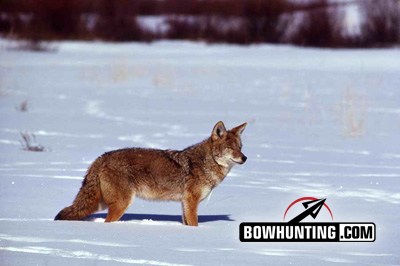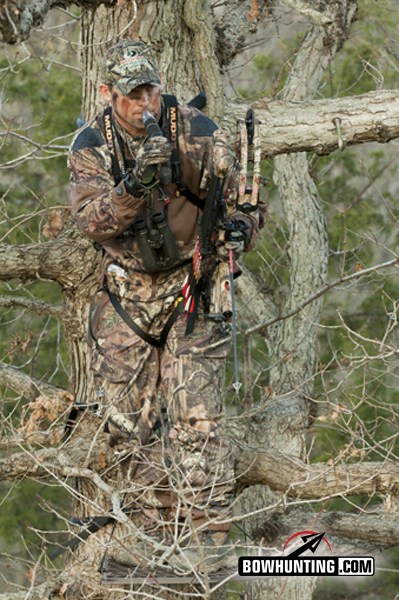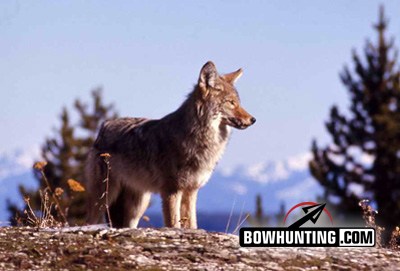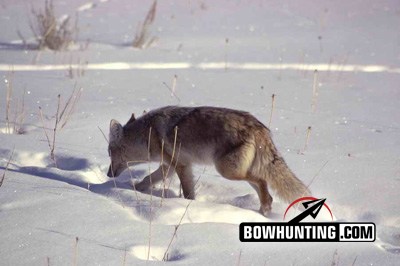LAST UPDATED: May 8th, 2015
After listening all day to university researchers and agency biologists discuss problems caused by white-tailed deer overabundance in Eastern states, Professor Valerius Geist of Canada opened his evening address with a prediction: “Enjoy your problem while it lasts, because the coyote is coming. Once he’s here, you’ll miss your deer problems.”
That was February 1994 in Charlottesville, Virginia, at the annual Southeast Deer Study Group meeting. Seventeen years later, with new studies documenting unprecedented fawn losses to the Southeast’s growing coyote population, some biologists call Geist prophetic.
Coyotes have long been part of the whitetail’s world in the Great Lakes area and other regions,
but they’ve expanded their range into the Southeast in recent years.
Some even think coyotes threaten Southeastern herds, and possibly deer hunting itself. “If the coyote is not yet a problem on your property, he will be in a few years,” said Mark Buxton, a wildlife manager with Southeastern Wildlife Habitat Services in Thomaston, Alabama, and Ehrhardt, South Carolina. “If you think you have a few coyotes, you actually have lots of coyotes.”
Buxton made his remarks in July 2010 at the Quality Deer Management Association’s annual convention in Louisville, Kentucky.
“We’ve long talked about food plots, timber-stand improvements and restoring native vegetation so deer can maximize their potential,” said Buxton, who has managed hunting properties for about 25 years. “The coyote is the next big part of that equation. As deer densities drop and coyote numbers rise, deer won’t be able to recruit enough fawns to overcome what coyotes kill.”
Wildlife researchers, however, aren’t so sure. They say the coyote is so new to Southeastern states that it generates more questions than answers. This gritty predator, which isn’t native to that region, didn’t appear there until the 1960s. In fact, South Carolina didn’t have coyotes until the 1980s. Later, from 1997 through 2006, the state’s deer herd declined 36 percent.
Because of coyote predation, biologists in the Southeast might have to prescribe smaller antlerless deer harvests by hunters.
Is that a coincidence? Answering such questions remains speculative, says Professor Karl Miller at the University of Georgia. “The Southeast has managed whitetails in the absence of predators for decades,” Miller said. “The coyote presents new considerations for everyone.”
Professor Stephen Ditchkoff at Auburn University in Alabama agrees. “We’re still early in that process,” he said. Ditchkoff and his graduate students see coyote problems at an Alabama site where they’re using GPS-equipped collars to study deer movements. When they started the study five years ago, they seldom lost a fawn to predation. But in 2008 they lost 17 of 50 fawns (34 percent) they collared, and in 2009 they lost more than half. They attribute most losses to coyotes.
In an Auburn study on fawn-survival research at a South Carolina military base, Ditchkoff said coyotes kill eight of nine fawns soon after they’re born, mostly between ages 2 to 6 weeks.
Miller has co-authored much of the Southeast’s recent research on coyotes. In one study in southwestern Georgia, the university compared fawn-to-doe ratios in two areas: an 11,000-acre area where trappers removed 23 coyotes and three bobcats, and a 7,000-acre area where no trapping was done. The trapped area had two fawns for every three does, and the untrapped area had two fawns for every 28 does.
Miller is also monitoring coyote studies by the U.S. Forest Service at South Carolina’s Savannah River Site. Researchers reported 75 percent of the site’s fawns die before they’re 6 weeks old, with coyotes likely responsible for 85 percent of the deaths.
Because such evidence suggests coyotes are crimping the fawn pipeline for Southeastern deer, Miller, Ditchkoff and other researchers are pushing for more research.
“We have to assess if and where we have coyote problems, and what’s the best way to address them,” Miller said. “But are coyotes going to affect the future of deer hunting? I don’t think so. Texas has had coyotes a long time, and so have parts of the Midwest, Louisiana and Mississippi. That being said, I suspect coyote densities are even higher in parts of the Southeast. We need more research so we can offer specific, well-informed management decisions. In some areas, managers might have to adjust antlerless harvests to account for coyotes. In other areas, intensive predator control might be necessary.”
Ditchkoff thinks coyotes have reached saturation levels in many parts of the Southeast, but that doesn’t mean deer hunting is imperiled. “I think this will eventually level out and stabilize,” he said. “Hunting will be part of the mix, but we have to figure out what the new model will be for deer management.”
Miller said another complication is that some coyote behaviors in the Southeast differ from those in other regions. For instance, unlike Western coyotes, Southeastern coyotes seldom form packs. They tend to be solitary or paired mates.
Does that affect how they hunt? Coyote-fawn predation has long been viewed as opportunistic and random; that is, fawns were in the wrong place at the wrong time. Buxton believes it’s not random on a 2,000-acre property he manages. From Spring 2009 through early summer 2010, he caught 34 of 63 coyotes (54 percent) during fawning months.
“That tells me coyotes are targeting fawns,” Buxton said. “When fawns start hitting the ground, it’s game-on for coyotes.”
Can hunters and wildlife managers boost fawn survival in areas with lots of coyotes? Buxton and other biologists, such as Dr. Grant Woods of Woods and Associates, encourage deer hunters to work with professional trappers to kill coyotes and learn trapping tactics. Woods has documented 16 percent fawn survival on his 1,500-acre property in southwestern Missouri. After attributing most of that loss to coyotes, he traps them every chance he gets.
“Shooting an occasional coyote from your deer stand won’t help,” Woods said. “You have to get after them and stay after them.”
Realize, though, that trapping and hunting will never eradicate them. “The more you shoot, the more they produce,” Buxton said. “Based on food supplies and the coyote population, they produce pups to fill the void. You’ll never solve this by playing around. You have to be serious about it.”

 By
By 







